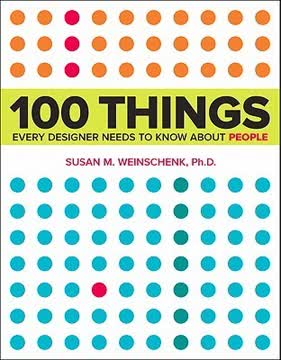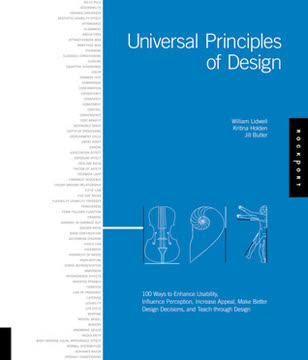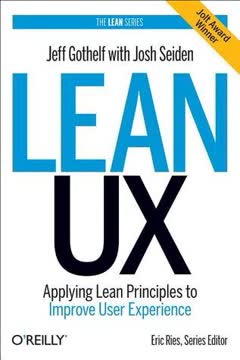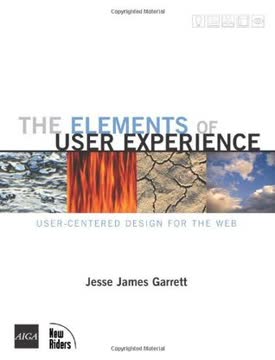つの重要なポイント
1. ユーザビリティテストは重要で、思ったより簡単
1人のユーザーでテストすることは、テストしないより100%良い。
なぜテストするのか? ユーザビリティテストは、ウェブサイトやアプリケーションの改善に不可欠です。これは、作成中のものを人々が使おうとする様子を観察し、使いやすくするか、使いやすいことを証明することを目的としています。プロセスは多くの人が思うよりも簡単で、最小限のリソースで効果的に行うことができます。
テストの方法: 基本的なプロセスは以下の通りです:
- 参加者の募集
- 彼らに実行させるタスクの作成
- 彼らの行動を観察し、考えを聞く
- 結果を分析し、改善を行う
複雑さやコストに圧倒されないでください。非公式で小規模なテストでも貴重な洞察を得ることができ、ユーザー体験の大幅な改善につながります。
2. 早期かつ頻繁に、1回のテストで3人のユーザーを対象にする
目的は何かを証明することではなく、構築中のものを改善するための洞察を得ることです。
早期かつ頻繁に: 何か見せるものができたらすぐにテストを開始しましょう。たとえそれがラフなスケッチやワイヤーフレームであっても構いません。開発プロセス全体を通じて、理想的には月に一度テストを行い、製品を継続的に改善します。
1回のテストで3人のユーザー: このアプローチにより、以下のことが可能になります:
- 主要なユーザビリティの問題を迅速に特定
- プロセスを管理しやすく、コスト効果を高める
- より頻繁に反復し、改善する
3人のユーザーでテストすることで、チームや予算を圧倒することなく、ほとんどの重要な問題を発見することができます。大規模で頻度の少ない研究を行うよりも、少人数で頻繁にテストする方が良いことを覚えておいてください。
3. 緩やかに参加者を募集し、ユーザーの行動に焦点を当てる
緩やかに募集し、カーブで評価する。
柔軟な募集: ターゲットオーディエンスに完璧に一致する参加者を見つけることにこだわらないでください。ほとんどのユーザビリティの問題はほぼ誰でも特定でき、時には外部の視点が貴重な新しい洞察を提供することもあります。
行動に焦点を当てる: 重要なのは、製品とどのように対話するかを観察することであり、意見や人口統計データを収集することではありません。注目すべき点は:
- ユーザーがどこで苦労し、混乱するか
- 何を見落とし、誤解するか
- どのようにナビゲートし、意思決定するか
テストしているのは製品であり、ユーザーではないことを忘れないでください。共感を持ち、参加者が正直で自然な行動を取れるように快適に感じさせることが重要です。
4. テストのために現実的なタスクとシナリオを作成する
作成中のものを人々が使おうとするのを見るなら、何か(またはいくつかのこと)をさせる必要があります。
タスクの選定: タスクは以下の条件を満たすものを選びましょう:
- 製品の成功にとって重要
- ユーザビリティの問題を明らかにする可能性が高い
- 実際の使用状況を代表するもの
シナリオの作成: 解決策を明かさずに文脈を提供する明確で簡潔なシナリオを作成します。インターフェースに表示される特定の単語やフレーズを使用しないようにし、単なる単語探しの演習にならないようにします。
例: 「来月ニューヨークへのフライトを予約したいです。適切なオプションを見つけ、予約プロセスを開始してください。」
現実的なタスクとシナリオを作成することで、ユーザーが実際の状況で製品とどのように対話するかについて、より正確な洞察を得ることができます。
5. ユーザーに考えを声に出してもらうことでテストを促進する
彼らが使っている様子を見て、同時に考えていることを聞くことで、他人の目(と心)を通してサイトを見ることができます。
考えを声に出すプロトコル: 参加者に製品を使用しながら考え、行動、感情を声に出してもらうよう促します。これにより、彼らの意思決定プロセスやメンタルモデルについて貴重な洞察が得られます。
効果的な促進のためのヒント:
- テスト中にユーザーに考えを声に出すようにリマインドする
- 詳細な回答を引き出すためにオープンエンドの質問をする
- 誘導的な質問やヒントを避ける
- 中立的なトーンとボディランゲージを保つ
促進の技術をマスターすることで、各テストセッションからより有用な情報を引き出し、ユーザーの体験を深く理解することができます。
6. チーム全体を観察とデブリーフィングに参加させる
見ることは信じることです。
チームの観察: デザイナー、開発者、マネージャー、ステークホルダーを含むすべてのチームメンバーにテストセッションを観察するよう奨励します。これにより、ユーザーのニーズや課題に対する共通の理解が生まれます。
チームの関与の利点:
- ユーザーへの共感を築く
- 二次情報への依存を減らす
- ユーザー中心のデザイン文化を育む
効果的なデブリーフィング: テスト後すぐにデブリーフィングセッションを開催し、以下のことを行います:
- 最も重要な問題を特定
- 対処すべき問題の優先順位を決定
- 潜在的な解決策をブレインストーミング
チーム全体をテストプロセスに参加させることで、ユーザー中心のデザインへの賛同を増やし、洞察を迅速に実行可能な改善に変えることができます。
7. 最小の労力で最も重要な問題を修正する
最も深刻な問題を最初に修正することに集中する。
徹底的に優先順位をつける: 最も多くのユーザーに影響を与える最も深刻なユーザビリティの問題に対処することに集中します。小さな問題に取り組んだり、完璧な解決策を実装する誘惑に抵抗しましょう。
効率的な問題解決のための戦略:
- 再設計ではなく微調整:セクション全体をオーバーホールするのではなく、小さくターゲットを絞った変更を行う
- 追加する前に削除:しばしば、要素を簡素化または削除することで、新しい機能を追加するよりも効果的に問題を解決できる
- クイックフィックスを実装:主要な再設計を待たずに、重要な問題に対処する
高影響で低労力の解決策に集中することで、完璧主義やスコープの拡大に陥ることなく、製品のユーザビリティを大幅に改善することができます。
8. リモートテストは利便性と柔軟性を提供する
全体として、リモートテストはライブテストの約80%の利点を、約70%の労力で提供します。
リモートテストの利点:
- 参加者の募集が容易
- 移動が不要
- 柔軟なスケジューリング
- 対面テストと同様の結果
考慮事項:
- テスト環境の制御がやや少ない
- 技術的な問題の可能性
- 非言語コミュニケーションが少ない
リモートテストツール:
- 画面共有ソフトウェア(例:GoToMeeting)
- ビデオ会議プラットフォーム
- 専門のリモートユーザビリティテストサービス(例:UserTesting.com)
リモートテストは対面の体験を完全に再現するわけではありませんが、地理的または物流的な制約が対面テストを困難にする場合に、貴重な洞察を得るための便利でコスト効果の高い代替手段を提供します。
最終更新日:
FAQ
What's "Rocket Surgery Made Easy" about?
- DIY Usability Testing: "Rocket Surgery Made Easy" by Steve Krug is a guide to conducting do-it-yourself usability testing. It aims to help individuals and organizations find and fix usability problems in their products.
- Practical Approach: The book provides a practical, step-by-step approach to usability testing, emphasizing simplicity and effectiveness over complexity.
- Focus on Fixing Problems: Unlike other books that focus solely on identifying usability issues, this book also covers how to prioritize and fix these problems.
Why should I read "Rocket Surgery Made Easy"?
- Improve Usability Skills: It equips you with the skills to conduct usability tests without needing to hire professionals, making it cost-effective.
- Actionable Advice: The book offers actionable advice that can be implemented immediately, making it suitable for both beginners and experienced practitioners.
- Enhance User Experience: By following the book's guidelines, you can significantly enhance the user experience of your website or product.
What are the key takeaways of "Rocket Surgery Made Easy"?
- Usability Testing is Essential: Regular usability testing is crucial for improving user experience and should be a routine part of the development process.
- Keep It Simple: Usability testing doesn't have to be complicated; even simple tests can yield valuable insights.
- Focus on Major Issues: Prioritize fixing the most serious usability problems first to make the most impact with limited resources.
How does Steve Krug define "Do-It-Yourself Usability Testing"?
- Qualitative Focus: DIY usability testing is qualitative, focusing on gaining insights rather than proving hypotheses.
- Informal and Flexible: It is informal and allows for flexibility, such as changing tasks mid-test if necessary.
- Observer Involvement: Involves team members observing the tests to gain firsthand insights into user behavior and issues.
What is the "A Morning a Month" plan in "Rocket Surgery Made Easy"?
- Monthly Testing Routine: The plan suggests conducting usability tests once a month, dedicating a morning to testing and debriefing.
- Three Users Per Session: Testing with three users is recommended to uncover significant usability issues without overwhelming the team.
- Focus on Simplicity: The plan emphasizes keeping the process simple to ensure it is sustainable and effective.
Who should be involved in usability testing according to Steve Krug?
- Diverse Observers: Involve a diverse group of stakeholders, including designers, developers, and managers, to observe the tests.
- Non-Target Users: While it's ideal to test with target users, testing with non-target users can also reveal valuable insights.
- Facilitator Role: The facilitator should guide the session, encouraging participants to think aloud without influencing their actions.
What are some common usability problems identified in "Rocket Surgery Made Easy"?
- Getting Off on the Wrong Foot: Users often start with incorrect assumptions, leading to confusion and errors.
- Failure to Notice: Important elements may go unnoticed due to subtle design cues or information overload.
- Navigation Issues: Users may struggle with navigation if the structure and labels are not intuitive.
How does Steve Krug suggest fixing usability problems?
- Tweak, Don't Redesign: Focus on making small, incremental changes rather than overhauling the entire design.
- Remove Clutter: Often, removing unnecessary elements can improve usability more than adding new features.
- Prioritize Fixes: Address the most critical issues first to maximize the impact of your efforts.
What is the "Think Aloud Protocol" in usability testing?
- Verbalize Thoughts: Participants are encouraged to verbalize their thoughts as they navigate the site, providing insights into their decision-making process.
- Facilitator's Role: The facilitator prompts participants to keep talking, ensuring a continuous flow of information.
- Reveals User Experience: This protocol helps reveal what users find confusing or intuitive, guiding design improvements.
What are the benefits of remote usability testing as described in "Rocket Surgery Made Easy"?
- Wider Participant Pool: Remote testing allows access to a broader range of participants, not limited by geography.
- Convenience and Flexibility: It is more convenient for participants and can be scheduled at flexible times.
- Comparable Results: Remote testing can yield results similar to in-person testing, though with some loss of control and richness.
What are the best quotes from "Rocket Surgery Made Easy" and what do they mean?
- "It's not rocket surgery™": This phrase emphasizes that usability testing is not as complex as it might seem and can be done by anyone with the right guidance.
- "A morning a month, that's all we ask": This quote highlights the simplicity and minimal time commitment required to conduct effective usability testing regularly.
- "The least you can do™": This suggests that even small changes can significantly improve usability, encouraging a focus on practical, incremental improvements.
How does "Rocket Surgery Made Easy" compare to Steve Krug's other book, "Don't Make Me Think"?
- Practical vs. Theoretical: While "Don't Make Me Think" focuses on usability principles and how to think about usability, "Rocket Surgery Made Easy" is a practical guide on how to conduct usability testing.
- Complementary Books: Both books complement each other, with "Don't Make Me Think" providing the foundational understanding and "Rocket Surgery Made Easy" offering the tools to apply that understanding.
- Focus on Action: "Rocket Surgery Made Easy" is more action-oriented, providing step-by-step instructions for implementing usability testing in real-world scenarios.
レビュー
本書『Rocket Surgery Made Easy』は、簡潔で実践的なユーザビリティテストのガイドとして高く評価されている。読者はKrugの率直な文体とユーモアを好んでいる。本書は、効果的なテストを最小限のリソースで実施するためのステップバイステップの指示、チェックリスト、およびヒントを提供している。一部の人々は内容が基本的すぎる、または時代遅れだと感じるが、多くの人々は初心者にとって価値があり、経験豊富な専門家にとっても便利な参考書と考えている。批評家は、伝統的なテスト方法に焦点を当てている点やリモートテストのカバー範囲が限られている点を指摘している。総じて、レビューアーは本書をユーザビリティテストの迅速でアクセスしやすい入門書として推奨している。
Similar Books















